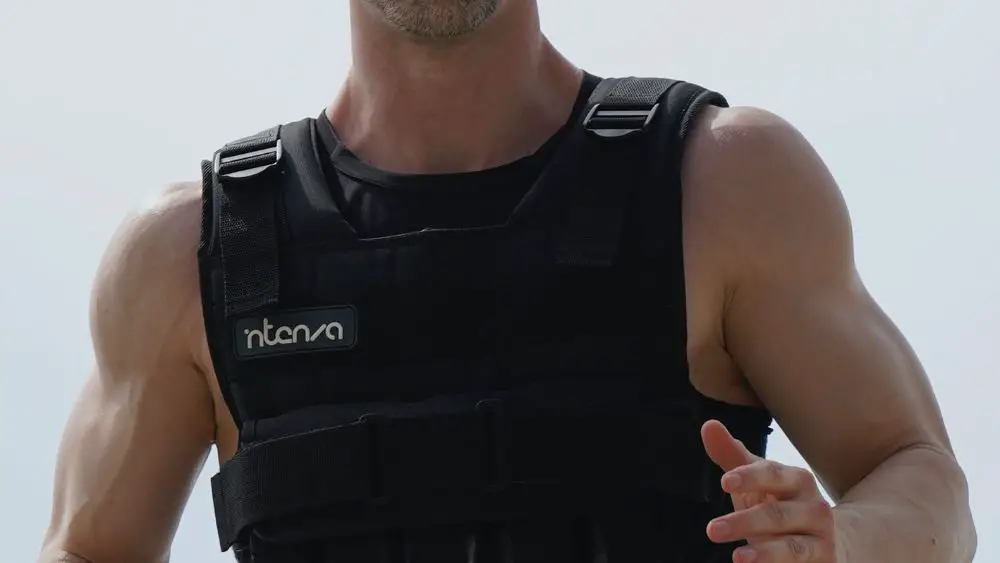This post contains affiliate links.

Many runners assume that using weighted vests improves your running speed and endurance. The theory is, by increasing the difficulty of the run, runners will run faster when they run without them.
However, running with weighted vests in training does not improve running speed and performance. The only way to train for speed is to run faster. Wearing a weighted vest prevents you from doing so, hence, it is not a good substitute to speed training.
Ahead, we’ll look at what running with a vest does and how it affects your running performance. We’ll also cover some of the major drawbacks of training with vests frequently.
Running With Vest Does Not Make You Faster
Every training protocol adheres to a principle called the Specific Adaptation on Imposed Demand which means your body will adapt to the specific demand that you imposed on it. That said, the only way to be a faster runner is to do speed drills or increase the strength of the muscles responsible for moving you forward.
Running with weighted vest trains you how to run with additional load, not how to run faster. Furthermore, the weighted vest imposes a downward force on your body while running is a forward motion. Thus, the resistance required to improve the strength of the muscles responsible for propelling you forward is not met by a weighted vest.
Why Do People Wear Vests When Running
People wear weighted vests when running because they think that it will drastically improve their performance. This “army-style” of training is embedded deep in the minds of people since they have the notion that added weight equals added gains and a faster pace.
It also provides a sense of variety in terms of workouts. Some athletes prefer additional challenges and difficulty instead of just doing regular running exercises.
While it might seem like a good idea at first, there are tons of drawbacks to fully incorporating this kind of gear, especially for endurance athletes such as marathoners.
What Running With a Weighted Vest Does
Runners use vests primarily to increase the intensity and difficulty of the run. The assumption is, by making the run harder in training, it will make the run easier in competition.
Research shows that running with weights, indeed, does increase metabolic costs, exercise intensity, and loading on the skeletal muscle which makes the run more difficult. However, that increase in difficulty is at the expense of training your speed and endurance which is what you actually need to perform better.
But that doesn’t mean running with a vest does not have any positive effects at all. For what it’s worth, running with a weighted vest does increase your mental strength which arguably has major effects on running performance.
In terms of creating the physiological changes needed to be a faster runner, however, running with a weighted vest does very little or none at all.
Does Running With a Weight Vest Make you Stronger?
Yes, to an extent, running with a weighted vest can make you stronger. However, the gains are very small and unnoticeable when compared to simply doing strength training and weight lifting.
If you want to incorporate weighted vests for muscle growth, then it is better to wear one during strength training and not during running. There are more benefits in doing bodyweight exercises with a weighted vest than running with it.
Consider doing squats, lunges, or circuit exercises that will improve your overall muscle endurance and cardiovascular function.
Related post: Does Lifting Weights Help Runners? (A Coach Explains)
Major Drawbacks of Wearing a Weighted Vest While Running
Here are some major dangers and drawbacks of wearing weighted vests:
Increase Load in the Joints
Running without any additional weights too often already puts you at risk of injury, imagine how much more risk you put yourself by adding extra load on your joints when you wear a weighted vest in your runs.
Putting on additional weights adds unnecessary stress to your joints which puts you more at risk of overuse injuries.
Changes Your Running Gait
Wearing a running vest may change your running gait which will do more harm than good. Because of the additional weight, your stride length may be shorter than usual to compensate for the extra weight.
What to Do Instead
Aside from speed and general strength training, you may opt to train with a running parachute or sled. Unlike a weighted vest, the resistance of this equipment is against forwarding motion which helps improves the strength and endurance of the muscles involved in running.
Another type of exercise that can help with running speed is uphill training. The inclination of the road when running uphill creates a natural resistance which could also help with building strength and power in your legs.
Final Thoughts
Weighted vests might be beneficial for those who are into functional training or those who want to challenge themselves. However, it won’t make you a faster runner. The truth is using them in endurance-based exercises such as running and marathon training poses more harm than benefits.

